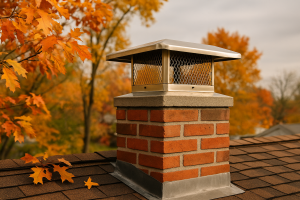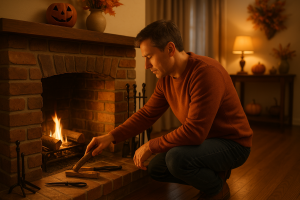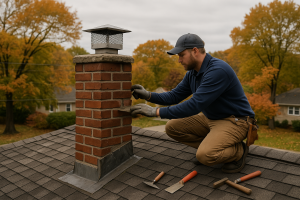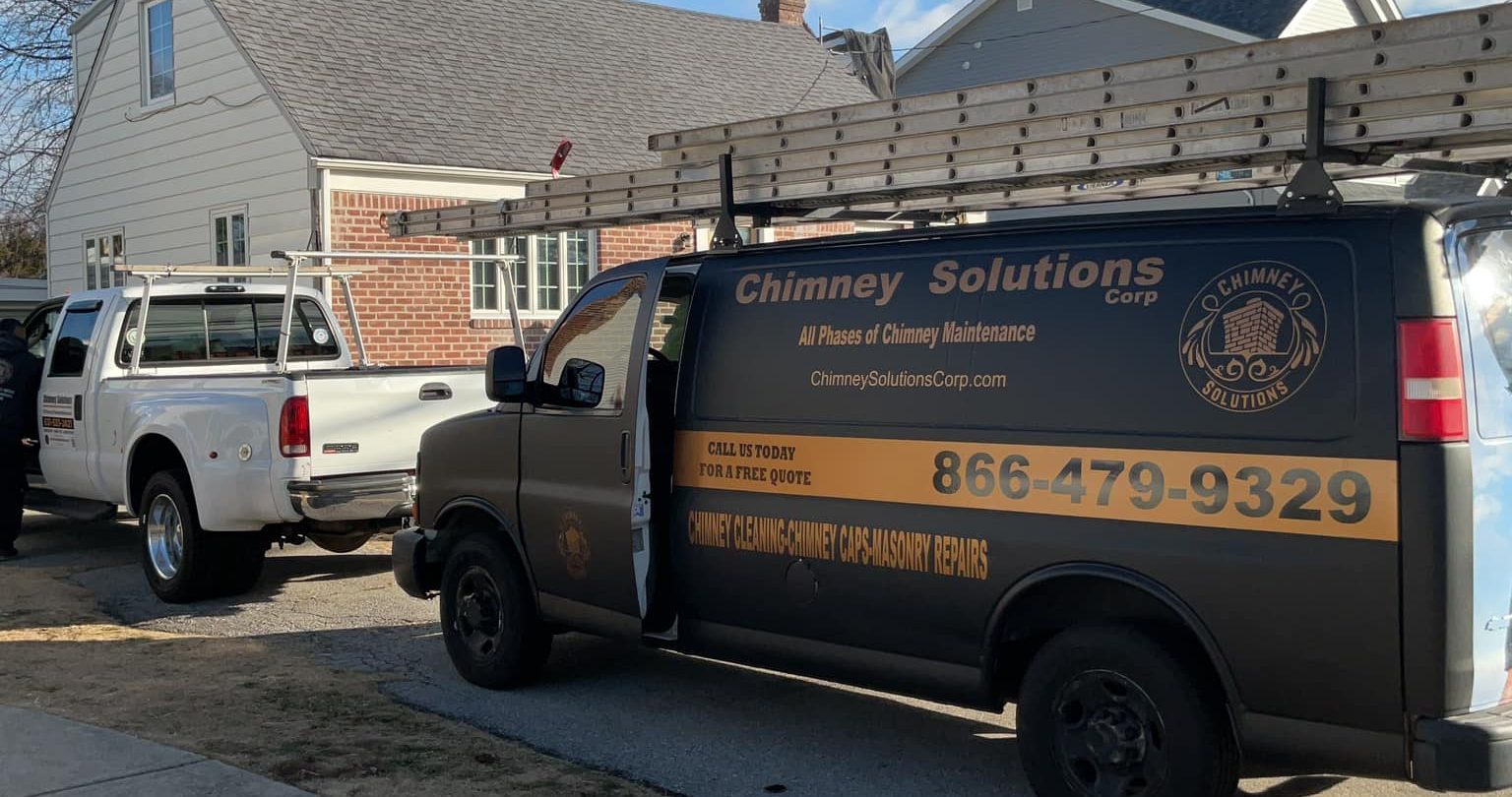Regular chimney liner maintenance not only ensures a clean and efficient chimney but also safeguards against creosote buildup and water damage. In this comprehensive guide from Chimney Solutions, we explore the importance of chimney liners, common issues, best cleaning practices, and maintenance tips to help you avoid costly repairs and keep your chimney functioning optimally.
Understanding the Importance of Chimney Liners
Chimney liners play a crucial role by providing a protective barrier between the hot flue gases and your home’s combustible materials. They help maintain efficient heat transfer and prevent damage to chimney walls and other structural components. A proper chimney liner minimizes risks associated with creosote buildup—a significant safety hazard—and reduces the chance of carbon monoxide leaks, ensuring the safe operation of wood-burning fireplaces and gas appliances.
Common Issues with Chimney Liners
Over time, chimney liners can experience various problems that affect performance and safety. Common issues include:
- Creosote Buildup: Excessive accumulation of creosote can restrict airflow and poses a serious fire risk.
- Corrosion and Wear: Exposure to acidic flue gases may deteriorate the liner material, compromising structural integrity.
- Obstructions and Blockages: Debris, animal nests, or soot can obstruct the chimney flue, leading to poor ventilation.
- Cracks and Gaps: Structural damage such as cracks or gaps may allow water intrusion and heat loss, resulting in expensive repairs.
Regular Inspections and Maintenance
Routine inspections are essential to detect potential issues before they escalate into major problems. Annual chimney inspections conducted by certified professionals can identify signs of creosote buildup, water damage, and other structural issues. These inspections provide peace of mind and help maintain proper ventilation, ensuring your chimney operates safely and efficiently.
Cleaning Your Chimney Liner: Best Practices
Regular cleaning is vital for preventing hazardous conditions and maintaining optimal performance. Best practices include:
- Scheduling annual cleanings, especially for wood-burning fireplaces where unseasoned wood may lead to increased creosote buildup.
- Using preventative cleaning measures during colder months when the risk of creosote accumulation is highest.
- Following proper cleaning processes with safety equipment to avoid exposure to toxic gases and creosote particles.
Tools and Techniques for Effective Cleaning
The success of your chimney cleaning depends on using the right tools and techniques. Essential tools include:
- Chimney Brush and Flexible Rods: These are used to scrub the interior of the chimney flue.
- High-Powered Vacuum Systems: Professional-grade vacuums help remove soot and loose debris.
- Specialized Cleaning Products: Chemical creosote removers can break down stubborn deposits.
- Protective Gear: Safety glasses, gloves, and dust masks are crucial to protect against harmful substances.
Preventative Measures and Timely Repairs
Taking a proactive approach to maintenance can prevent minor issues from becoming major repairs. Recommended measures include:
- Conducting routine chimney inspections to catch problems early.
- Promptly repairing any detected cracks, gaps, or obstructions.
- Applying waterproofing sealants to prevent water damage and moisture intrusion.
- Scheduling timely repairs to address wear and tear before extensive damage occurs.
Protecting Against Flue Gas, Moisture, and Creosote Buildup
A well-maintained chimney liner is vital for ensuring proper ventilation and protecting against harmful byproducts of combustion. Key strategies include:
- Ensuring proper airflow to expel toxic gases and reduce the buildup of flammable creosote.
- Monitoring for signs of moisture intrusion that could lead to water damage.
- Using carbon monoxide detectors to provide early warnings of potential leaks.
Compliance with Local Building Codes and Safety Standards
Maintaining compliance with local building codes and safety standards is crucial for long-term safety. This involves:
- Adhering to guidelines from reputable organizations such as the Chimney Safety Institute of America (CSIA) and the National Fire Protection Association (NFPA).
- Keeping records of annual inspections, cleaning, and repairs for insurance and regulatory purposes.
- Hiring certified chimney technicians to ensure that all maintenance and repairs are performed to the highest standards.
DIY Maintenance vs. Professional Assistance
Both DIY maintenance and professional chimney cleaning have their merits. However, when it comes to safeguarding your home from the risk of chimney fires, carbon monoxide poisoning, and other potential hazards, professional assistance offers significant benefits that go far beyond simple cost savings.
DIY Maintenance
DIY maintenance may reduce costs and allow for regular cleaning between professional inspections. It can be a viable option for homeowners familiar with the cleaning process, provided they have the right chimney cleaning products, such as a quality Chimney Brush, extension rods, and protective gear. However, DIY efforts often fall short when it comes to addressing hidden issues like a buildup of creosote, gaps in chimney liners, or subtle signs of chimney damage that require specialized knowledge.
Professional Assistance
Professional chimney sweeps and Chimney professionals bring a wealth of expertise to the table. They perform comprehensive inspections during Regular chimney inspections to detect issues like creosote build-up, creosote residue, and even minor structural issues with your chimney flue liner, chimney crown, or masonry chimney. Using advanced chimney cleaning methods and specialized equipment, a professional chimney sweep can efficiently remove excessive soot and hazardous deposits that can lead to dangerous fires and poor ventilation.
Professionals are trained to identify and mitigate potential hazards associated with incomplete combustion, excessive buildup from wood-burning stoves, or Gas Fireplace systems. They understand the challenges posed by burning unseasoned wood, which often results in an excessive buildup of creosote, as well as the corrosive byproducts from acidic combustion gases. With their thorough approach, they ensure proper maintenance and can recommend timely repairs to prevent costly repairs and maintain optimal chimney performance.
Moreover, professional assistance helps reduce the risk of chimney fires and the risk of carbon monoxide exposure by ensuring that the chimney is free of blockages and that flammable materials, such as accumulated soot and creosote, are safely removed. Their expertise in using proper chimney cleaning supplies, specialized brushes, and high-powered vacuums means they can detect potential chimney liner issues—like wear of chimney liners or gaps in chimney liners—that may go unnoticed during DIY cleaning.
By hiring a professional, you benefit from Regular inspections performed by certified experts accredited by organizations like Chimney Solutions. These professionals provide a comprehensive evaluation of your chimney, checking for issues such as structural damage to the chimney walls, chimney caps, and even the chimney crown. They also verify that chimney drafts are optimal, ensuring efficient airflow and proper ventilation through the chimney flue.
In addition, professional chimney cleaning services offer peace of mind knowing that all maintenance work adheres to strict safety standards and building codes. This proactive approach minimizes the potential hazards associated with flammable byproducts and corrosive byproducts, and it helps prevent dangerous fires and carbon monoxide leaks. Their detailed inspection checklists and adherence to standard procedures serve as a crucial precautionary measure to keep your home safe over long periods of time.
For commercial or residential properties alike, professional assistance is particularly beneficial when dealing with complex chimney systems or older masonry chimneys that may present a wide range of maintenance challenges. Their use of professional cleaning equipment and techniques ensures that even the most stubborn creosote buildup and chimney flue liner issues are effectively resolved.
Conclusion: Ensuring Long-Term Efficiency and Safety
Maintaining your chimney liner is vital for preventing chimney fires, carbon monoxide leaks, and structural damage. Regular inspections, routine cleaning, and timely repairs are the cornerstones of effective chimney maintenance. Whether you choose to perform DIY cleaning or hire professional chimney cleaning services, the key is to remain proactive and adhere to recommended maintenance schedules.
For more detailed information and industry-standard safety guidelines, visit reputable sources such as the Chimney Safety Institute of America (CSIA) and the National Fire Protection Association (NFPA). By following these best practices, you ensure that your chimney remains a safe, efficient, and long-lasting component of your home, providing you with peace of mind and preventing costly repairs over time.



